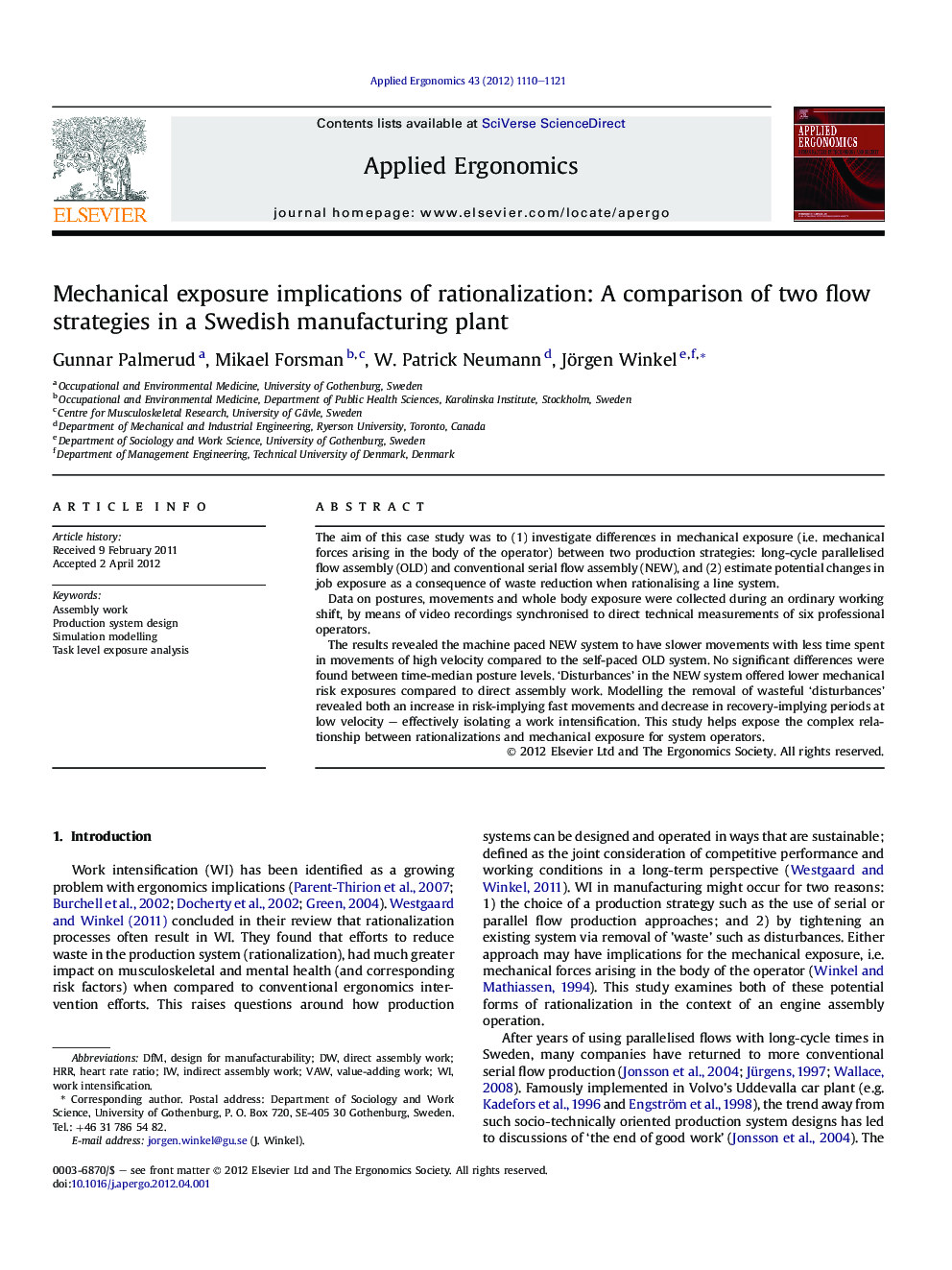| Article ID | Journal | Published Year | Pages | File Type |
|---|---|---|---|---|
| 548509 | Applied Ergonomics | 2012 | 12 Pages |
The aim of this case study was to (1) investigate differences in mechanical exposure (i.e. mechanical forces arising in the body of the operator) between two production strategies: long-cycle parallelised flow assembly (OLD) and conventional serial flow assembly (NEW), and (2) estimate potential changes in job exposure as a consequence of waste reduction when rationalising a line system.Data on postures, movements and whole body exposure were collected during an ordinary working shift, by means of video recordings synchronised to direct technical measurements of six professional operators.The results revealed the machine paced NEW system to have slower movements with less time spent in movements of high velocity compared to the self-paced OLD system. No significant differences were found between time-median posture levels. ‘Disturbances’ in the NEW system offered lower mechanical risk exposures compared to direct assembly work. Modelling the removal of wasteful ‘disturbances’ revealed both an increase in risk-implying fast movements and decrease in recovery-implying periods at low velocity – effectively isolating a work intensification. This study helps expose the complex relationship between rationalizations and mechanical exposure for system operators.
